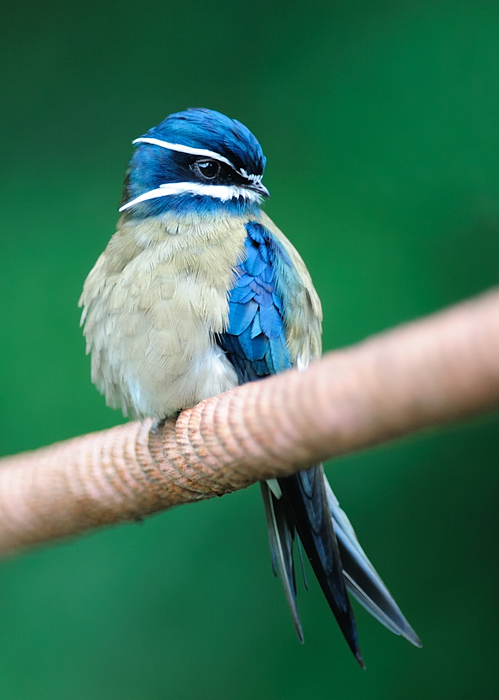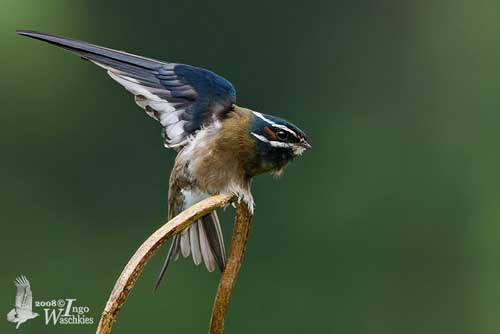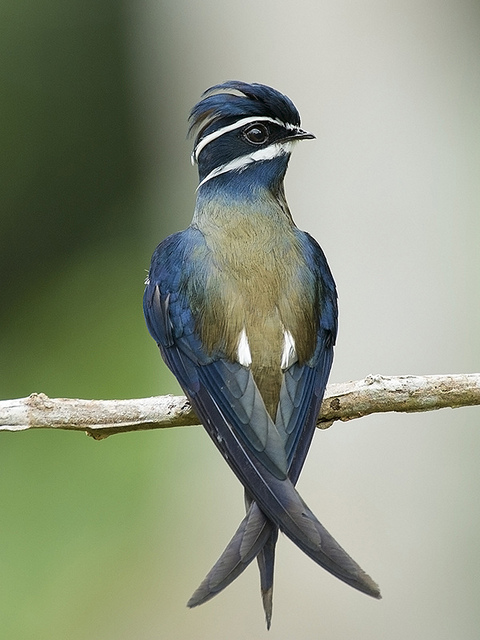
Hemiprocne comata
TAXONOMY
Cypselus comatus Temminck, 1824, Sumatra. Two subspecies.
OTHER COMMON NAMES
English: Lesser tree swift; French: Hйmiprocnй coiffй; German:
Ohrenbaumsegler; Spanish: Vencejo Arborнcola Chico.
PHYSICAL CHARACTERISTICS
5.85 in (15 cm); 0.8– 1.0 oz (21–26 g). Head and sides of
throat glossy blue-black (with greenish gloss when fresh), body
bronze olive, wing and tail dark. Short forehead crest and long
lanceolate feathers in facial region forming two white stripes
from lores over the eye to nape and from chin along jawline to
side of neck. Ear coverts glossy blackish in females and rufous
in males.
DISTRIBUTION
Peninsular Thailand
and Malaysia, Sumatra,
Borneo, and
Philippines except
Palawan.
HABITAT
Forages over canopy
and edge areas of
lowland forests. Utilizes
midlevel bare
twigs of forest trees
as perches from
which to make brief
foraging flights.
BEHAVIOR
Has characteristic
upright stance when
perched with short
crest erected. Makes
swooping flights in
search of aerial prey,
often returning to
original perch. Appears to be territorial year-round only sharing
foraging area with newly fledged young. Not as social as
other tree swifts which may at times gather in larger groups.
Utilizes lower perches than gray-rumped tree swift when inhabiting
same area.
FEEDING ECOLOGY AND DIET
Feeds on presumably a large array of aerial insects taken on
the wing.
REPRODUCTIVE BIOLOGY
Makes tiny nest glued to horizontal branch characteristic of the
family. The single white egg is incubated for about 21 days
and the combined incubation and fledging period takes approximately
50 days.
CONSERVATION STATUS
No conservation issues identified.
SIGNIFICANCE TO HUMANS
None known.
Photo Gallery of - Whiskered tree swift




 Animalia Life
Animalia Life